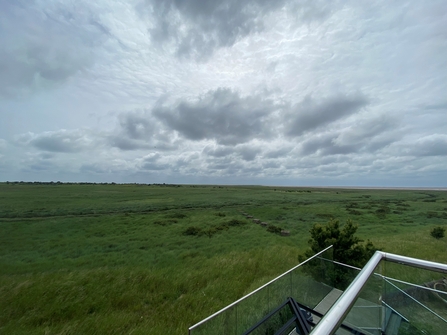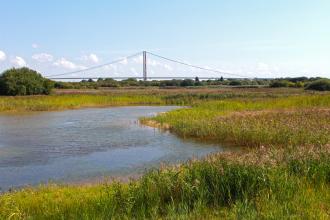Where to see winter waders
The winter may feel chilly to us, but for waders nesting in the Arctic, the British coast is positively balmy. From autumn, the tundra wastes and taiga boglands empty, and wading birds head for our food-rich estuaries in astounding numbers.
Over half a million lapwings from across northern Europe, half a million dunlin from Scandinavia, 300,000 knot from northern Canada, 300,000 oystercatchers from Iceland and Norway, 60,000 bar-tailed godwits from north west Russia, 50,000 Icelandic redshanks, and 40,000 grey plovers from the Arctic join local birds, bickering and jostling for space on our UK mudflats.
There’s nothing quite like the clamour and swirling patterns of flocks of birds wheeling together as they come in to roost or move from one feeding site to another.
What to look out for
During the winter months, watch for the build-up of wading birds such as knot, grey plover, bar-tailed godwit and sanderling arriving from their wintering grounds to the south. Pausing on The Wash for a while to rest and re-fuel, they find food on the vast mudflats before heading north to the Arctic breeding grounds from Siberia across to Greenland. When high tides cover the mud-flats they must find safe places to roost such as at Gibraltar Point.
Flocks of lapwing also begin to group over winter. If you don't get to see their iridescence close up, instead listen out for their 'peewit' sound or look for their distinctive black and white rounded wings when in flight. Oystercatchers can also be seen probing the muddy shores looking for shellfish to eat. It's red bill and legs look striking against it's black and white body, though it's loud 'peep-ing' call means it's often heard before it's seen.
Where to see them
The Wash, on the east coast between Lincolnshire and Norfolk is one of the most important wetlands on the North Sea, home to upwards of 500,000 birds during the winter. The high tide roost at Gibraltar Point regularly attracts more than 100,000 waders, including 80,000 knot as well as oystercatchers, redshank, godwits and dunlin.
How to do it
Time your visit for an hour or so before high tide, and you'll be there to see the birds pushed up off the mud by the incoming water. At high tide roost sites, thousands of birds gather together, jostling for space on what remains of the higher ground. The spring tides are the highest of the year, so will normally result in the biggest performances by the flocks.
Remember to wrap up warm, the east coast can get rather brisk! If you're visiting Gibraltar Point, why not head back to our Visitor Centre to warm up with a hot chocolate afterwards. You'll still get great views over the coast from inside with flocks of waders regularly passing overhead.

View from the upper deck at Gibraltar Point
Share your sightings
Share your wild experiences with us on social media by using #LincsWildlife or tagging us on Facebook, Twitter or Instagram. We love seeing your adventures in nature!















